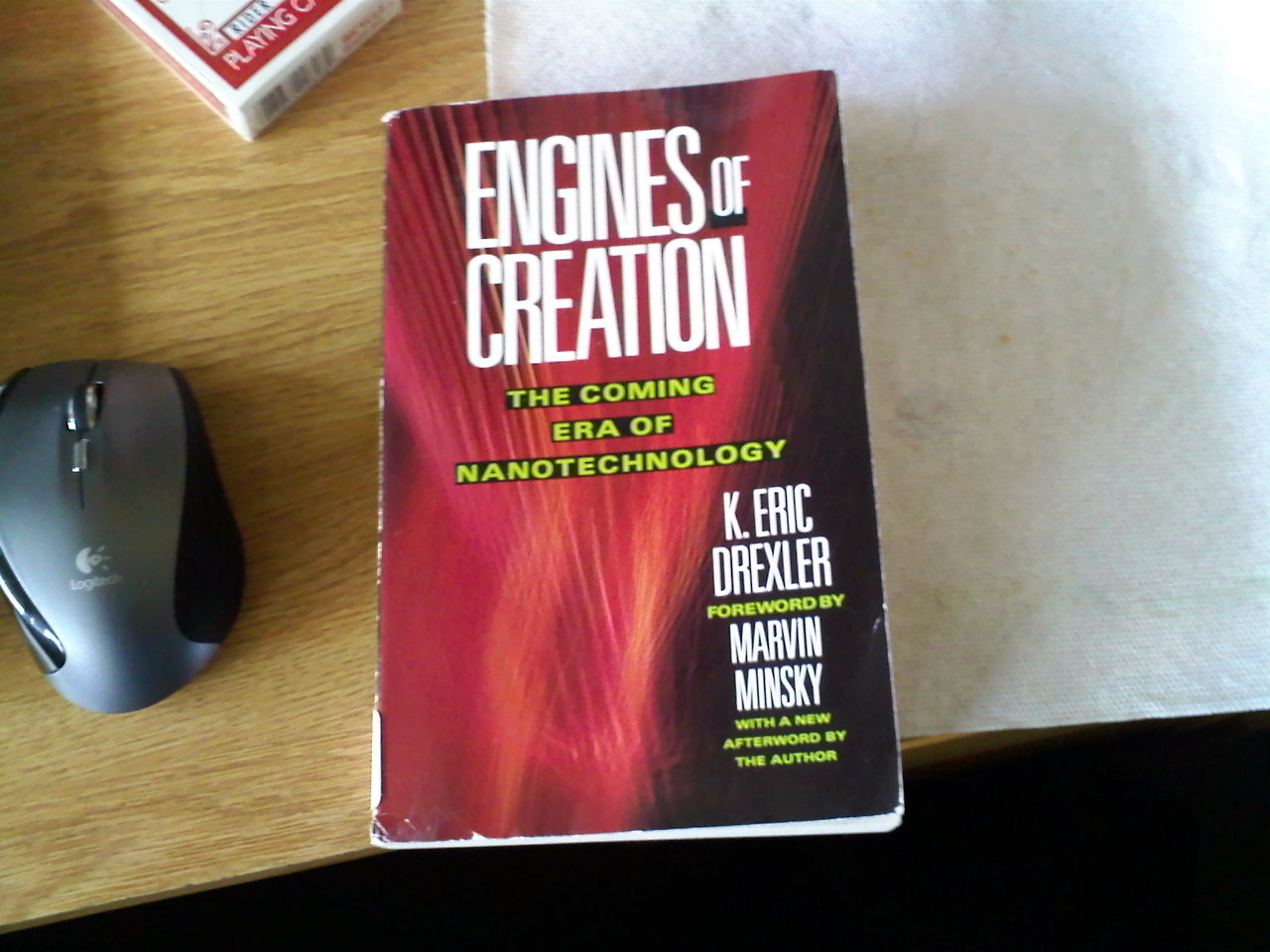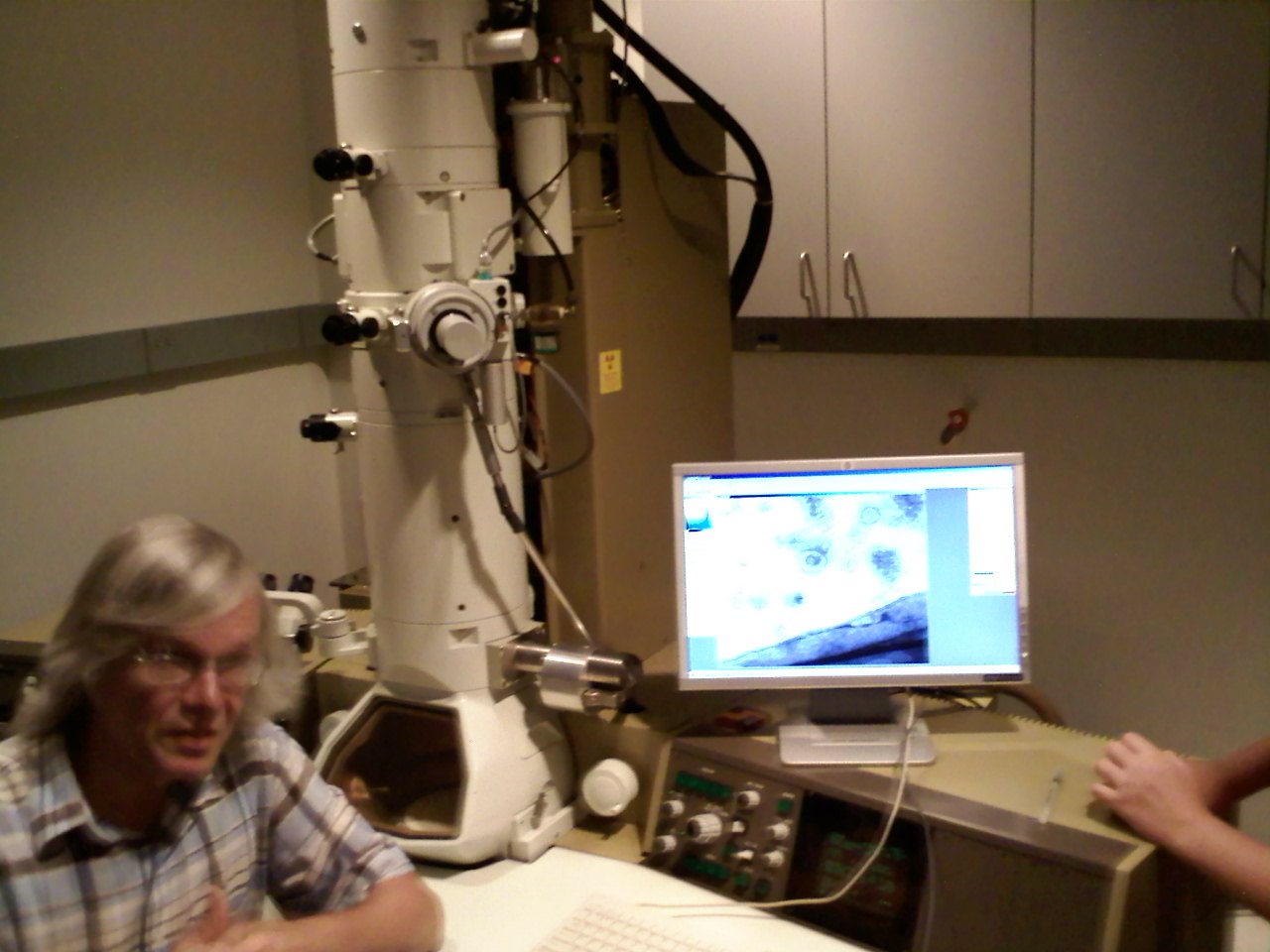
Adam explaining the function of an atomic force microscope
“Seeing the Invisible” was the topic of the day. This morning started with an introduction to the perpetual cycle facilitated by art and science begat by the Renaissance. From the coordinate plane to the camera, perspective became an essential part to the physical and artistic world. Louis Pasteur opened up the door to the microscopic world with his research on bacterial growth. Technologies have come a long way as has our understanding of life on the nanoscopic scale. During this morning’s lecture we were shown a game called “foldit” which uses gamers to solve protein structure. The game and its purpose reminded me a lot of what K. Eric Drexler outlined in his famous book Engines of Creation.

Drexler's Engines of Creation
Drexler described fact forums and hypertext which he called “magic paper made real” (220) that would allow scientists to publish their findings “as fast as mail, meetings, and electronic messages permit, rather than delaying exchanges by many months” (211) where users will “associate ideas through published links, enriching their meaning” (224). Published in 1986, it’s incredible to see Drexler outlining the purposes of online tools like Wikipedia and the internet itself years before its emergence as the ultimate terminal for information exchange. Drexler was ahead of his time describing a future representative of today with publicly accessible tools like the internet and “foldit” that make life more productive and efficient.

a demonstration of the electron microscope in action
Refinement of nanotechnology is close. Lab visits today revolved around microscopy including X-ray, light, and scanning microscopes. They all at one time seemed so similar but my experiences today have shown me otherwise. Each form of microscopy has its own specific set of characteristics, purposes, and advantages. The atomic force microscope (AFM), for example, functions not only as a microscope but as a probe able to manipulate the matter being analyzed. It was a very enriching day. To conclude the afternoon, I had the honor of meeting Kevin Love in front of the Wooden Center.

a scanning tunneling microscope (STM)
One Comment